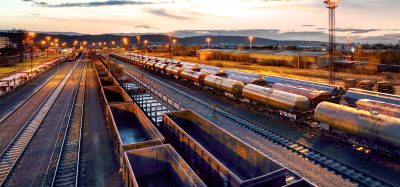Investing in Scotland’s railways
Posted: 3 December 2008 | | No comments yet
We are fortunate in Scotland to have a Scottish Parliament that is willing to invest in Scotland’s transport infrastructure, to reconcile the often conflicting needs of both the environment and the economy. Transport Scotland’s strategy document, Scotland’s Railways, confirms the importance of rail services in supporting economic development and in combating carbon emissions. On the economic side, the railways carry millions of tonnes of freight, enable millions of commuter journeys to be undertaken every year and support Scotland’s tourism industry by providing a reliable and high quality means of accessing and getting around the country.
We are fortunate in Scotland to have a Scottish Parliament that is willing to invest in Scotland’s transport infrastructure, to reconcile the often conflicting needs of both the environment and the economy. Transport Scotland’s strategy document, Scotland’s Railways, confirms the importance of rail services in supporting economic development and in combating carbon emissions. On the economic side, the railways carry millions of tonnes of freight, enable millions of commuter journeys to be undertaken every year and support Scotland’s tourism industry by providing a reliable and high quality means of accessing and getting around the country.
We are fortunate in Scotland to have a Scottish Parliament that is willing to invest in Scotland’s transport infrastructure, to reconcile the often conflicting needs of both the environment and the economy.
Transport Scotland’s strategy document, Scotland’s Railways, confirms the importance of rail services in supporting economic development and in combating carbon emissions. On the economic side, the railways carry millions of tonnes of freight, enable millions of commuter journeys to be undertaken every year and support Scotland’s tourism industry by providing a reliable and high quality means of accessing and getting around the country.
On the environmental side, the railways support the Government’s objective of reducing CO2 emissions by providing an environmentally attractive alternative to road and air transport.
In short, in Scotland there is commitment to improving Scotland’s railways and we are witnessing levels of investment in new and improved services not seen in recent history.
Since First ScotRail took over the franchise in 2004, we have seen a 20% increase in passenger journeys. Performance figures have continued to improve to the extent that First ScotRail was recently crowned “Rail Passenger Operator of the Year 2008”. And in March this year, Transport Scotland granted a three-year extension to the franchise to 2014 in recognition of the quality of services provided by First ScotRail.
Inevitably, strong growth in demand for rail travel has implications for levels of investment. We are experiencing capacity issues across our network, particularly during peak periods, and are witnessing an increasing appetite for new services.
New and additional services require additional rolling stock and, to address this, Transport Scotland, through First ScotRail, is investing in the region of £200 million in the procurement of 38 new Class 380 EMUs from Siemens for delivery in late 2010/early 2011. The order will comprise of 16 four-car units and 22 three-car units.
The train is a development of the successful Desiro UK train built by Siemens. However, the new Class 380 will incorporate end gangway connections to allow staff and passengers full access to all coaches.
The new trains will increase capacity through a combination of longer trains and longer carriages with extra seats. Compared to the Class 334 EMUs which currently provide these services, an additional 126 seats will be provided on peak-hour trains in Ayrshire. Furthermore, the ability to mix three and four-car trains will provide increased flexibility in deployment to better match capacity with demand.
Internally, the seating layout is spacious with a 2+2 configuration throughout and bay seating for the majority. The carriages will be fully compliant with new DDA requirements. Luggage capacity will be much improved with provision also for bicycles. There will be power sockets for laptops, air conditioning for passenger comfort and CCTV for passenger security.
Provision for Selective Door Opening (SDO) will ensure compatibility with existing platform capacity (although there are plans to extend the length of some of the platforms ahead of the introduction of the new trains).
The Class 380s will be maintained by First ScotRail in Glasgow at an expanded Shields Depot. While some technical support will be provided by Siemens, First ScotRail will make a significant investment in additional maintenance staff to keep the new trains running.
As well as the services in Ayrshire and Inverclyde, the new Class 380s will provide services on the new Glasgow Airport Rail Link (GARL), a multi million pound project funded by Transport Scotland with a 15 minute service in both directions between the airport and Glasgow city centre. A completely new line, the GARL is scheduled to open in late 2011.
Additionally, while the new Class 380s will directly deliver the services described above, they will, indirectly, also facilitate the introduction of a completely new service between Glasgow and Edinburgh.
These are exciting times for Scotland’s railways. As the operator of 95% of rail services in Scotland, First ScotRail is delighted to be playing its part and we look forward to continuing to work with our industry partners in improving rail services for the people of Scotland.








